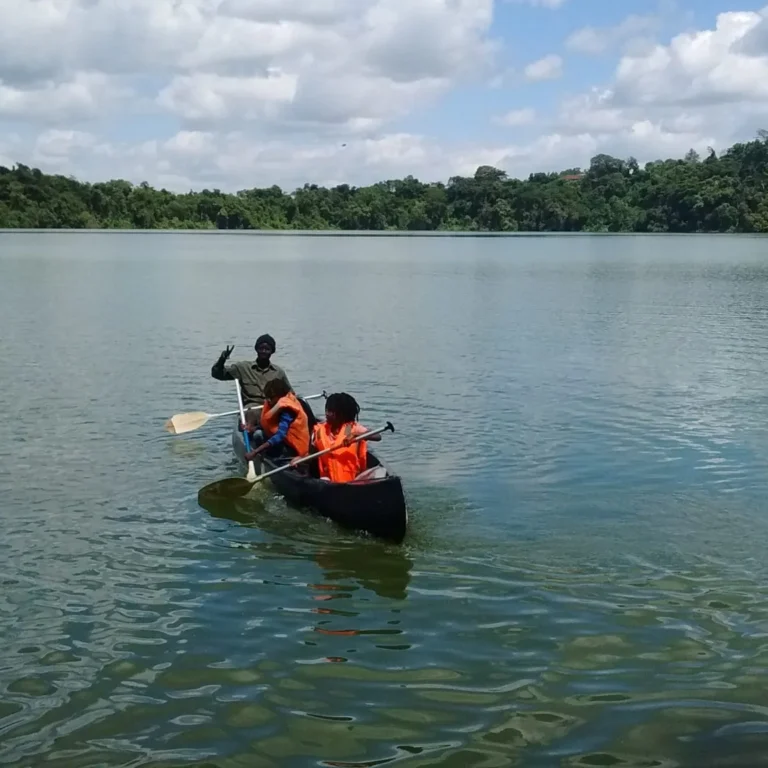Mount Meru, an iconic stratovolcano located in Tanzania, is a natural marvel often overshadowed by its more famous neighbor, Mount Kilimanjaro. However, Meru holds its own with a rich tapestry of history, biodiversity, and geological significance. The mountain is with its 4,566 m (14,990 feet) Tanzania’s second highest peak after Kilimanjaro and the fifth highest in Africa. Mountain has two peaks, Meru Summit, the highest point, and Ash Cone. Here, we delve into 20 intriguing facts about Mount Meru that highlight its importance and allure.
Facts 1: Geological Formation and Age
Mount Meru, an imposing stratovolcano, is located in Tanzania, just 70 kilometers west of the more famous Mount Kilimanjaro. Formed over 500,000 years ago through multiple volcanic eruptions. The mountain’s geological history is a testament to the Earth’s dynamic nature, showcasing layers of hardened lava, ash, and pyroclastic materials. The formation of Mount Meru has contributed significantly to the understanding of volcanic activity and its impacts on the surrounding environment.
Facts 2: Second Highest Peak in Tanzania
Standing at an impressive 4,566 meters (14,980 feet), Mount Meru is the second highest peak in Tanzania. Despite being overshadowed by Mount Kilimanjaro. Meru offers a more rugged and less crowded alternative for climbers. The peak provides spectacular views of the Tanzanian landscape, including the majestic Kilimanjaro, which towers in the distance.
Facts 3: Unique Crater and Caldera
One of the most remarkable features of Mount Meru is its distinct crater and caldera. The volcanic cone has been heavily eroded by past eruptions. Creating a dramatic caldera that is 3.5 kilometers in diameter. Within this caldera lies a smaller, active volcanic cone, adding to the mountain’s unique geological structure. The inner crater is a stark reminder of the mountain’s violent volcanic past.
Facts 4: Rich Biodiversity
Mount Meru is part of Arusha National Park and boasts an incredible range of biodiversity. The mountain’s slopes are covered with dense forests that host a variety of flora and fauna. From towering fig trees to colorful wildflowers, the vegetation changes with altitude, creating diverse ecosystems. Wildlife such as elephants, buffaloes, giraffes, and a multitude of bird species make their home on Mount Meru, making it a paradise for nature lovers and researchers alike.
Facts 5: Cultural Significance
Mount Meru holds profound cultural significance for the local Meru people. It is considered a sacred mountain and features prominently in local folklore and traditions. The Meru people have a deep connection with the mountain, believing it to be the home of ancestral spirits. This cultural heritage adds a rich layer of human history to the mountain’s natural beauty.
Facts 6: Challenging Climbing Routes
The ascent of Mount Meru is known for its challenging climbing routes. The most popular route, the Momella Route, starts in Arusha National Park and takes hikers through diverse landscapes, from savannahs to lush rainforests. The trek is physically demanding but rewarding, with breathtaking views and a sense of accomplishment upon getting the summit.
Facts 7: Lesser-Known Neighbors
While Mount Kilimanjaro often steals the spotlight, Mount Meru’s lesser-known neighbors include smaller volcanic cones and craters that dot the landscape. These features provide additional opportunities for exploration and adventure. Little Meru, a smaller peak on the same massif, offers hikers a chance to acclimatize and enjoy panoramic views before tackling the main summit.
Facts 8: Natural Habitats and Conservation Efforts
Mount Meru’s diverse habitats are subject to ongoing conservation efforts. Arusha National Park, which encompasses the mountain, is dedicated to protecting its unique ecosystems. Conservation programs aim to preserve the rich biodiversity, prevent deforestation, and protect wildlife from poaching. These efforts ensure that Mount Meru remains a pristine natural environment for future generations.
Facts 9: A Geological Marvel
Mount Meru is considered a geological marvel due to its complex furious history and the visible impact of erosion and past emission. Geologists and researchers study the mountain to understand furious processes and the evolution of stratovolcanoes. The visible layers of lava and ash provide valuable insights into the Earth’s geological past.
Facts 10: Historical Eruptions
Mount Meru has experienced numerous emission throughout its history, with the most recent significant eruption occurring in 1910. These emission have shaped the mountain’s current form and contributed to its dramatic landscapes. While currently dormant, Mount Meru’s furious activity is closely monitored to ensure the safety of the surrounding communities.
Facts 11: The Ultimate Pre-Kilimanjaro Trek
For those planning to climb Mount Kilimanjaro, Mount Meru serves as the ultimate pre-Kilimanjaro trek. Climbing Meru provides excellent getting to top and prepares climbers for the higher altitudes of Kilimanjaro. The experience of climbing
through diverse terrains and reaching the summit of Meru offers both physical preparation and an lifetime adventure.
Facts 12: Stunning Sunrise Views
One of the most rewarding aspects of climbing Mount Meru is the stunning sunrise views from the summit. As the sun rises, it casts a golden glow over the landscape, illuminating the plains of Tanzania and the silhouette of Mount Kilimanjaro in the distance. This breathtaking spectacle is a highlight for hikers and a perfect reward for their efforts.
Facts 13: Ancient Trade Routes
Mount Meru’s location made it a significant landmark in ancient trade routes Mount Meru – Guide, Map, Faq and more. Caravans and traders navigating the region used the mountain as a reference point. These historical routes contributed to the cultural exchange and economic development of the area, further enhancing Mount Meru’s historical importance.
Facts 14: Diverse Climate Zones
The mountain’s elevation results in diverse climate zones ranging from the base to the summit. Climbers can experience varying climates, from warm savannahs at the foothills to cool, misty forests and alpine conditions near the peak. This variation in climate zones supports a wide range of plant and animal species,
adding to the mountain’s ecological richness.
Facts 15: The Legend of Fumo Liyongo
Local legends tell of Fumo Liyongo, a legendary hero said to have resided on Mount Meru. His stories, passed down through generations, contribute to the mountain’s rich tapestry of cultural lore. A legendary hero and poet from East African oral traditions. This legend
adds a mythical dimension to Mount Meru, enriching its cultural tapestry and connecting it to broader East African heritage.
Facts 16: Mount Meru’s Role in Education
Mount Meru plays a significant role in education and research 9 Facts About Climbing Mount Meru. Its unique geological and ecological features attract scientists, students, and researchers from around the world. The mountain serves as a natural laboratory for studying furious activity, biodiversity, and conservation practices, contributing valuable knowledge to these fields.
Facts 17: The Mountain’s Impact on Weather
Mount Meru significantly influences the local weather patterns Intriguing Facts About Mount Meru. The mountain’s presence affects rainfall distribution and creates microclimates on its slopes. This impact on weather is crucial for agriculture and the livelihoods of communities living around the mountain. Understanding these weather patterns is essential for sustainable development and environmental management in the region.
Facts 18: Volcanic Soil and Agriculture
The furious soil on Mount Meru’s slopes is exceptionally fertile, supporting productive agriculture. Farmers in the region cultivate a variety of crops, including coffee, bananas, and vegetables Intriguing Facts About Mount Meru. The nutrient-rich soil contributes to high agricultural yields, making the area an important agricultural hub in Tanzania.
Facts 19: Mount Meru and the Great Migration
Mount Meru is a significant landmark within the ecosystem of the Great Migration, one of the most spectacular wildlife events in the world. While the main migration route is further north in the Serengeti, the ecological influence of Mount Meru extends to the surrounding areas, supporting diverse wildlife populations and contributing to the overall health of the regional ecosystems.
Facts 20: A Sanctuary for Birdwatchers
Mount Meru is a sanctuary for birdwatchers, boasting over 400 species of birds Intriguing facts about mount meru for kids. The diverse habitats on the mountain attract a wide range of birdlife, from colorful sunbirds to majestic raptors. Birdwatchers and ornithologists flock to the mountain to observe and study these avian species, making it a prime destination for birdwatching enthusiasts.








